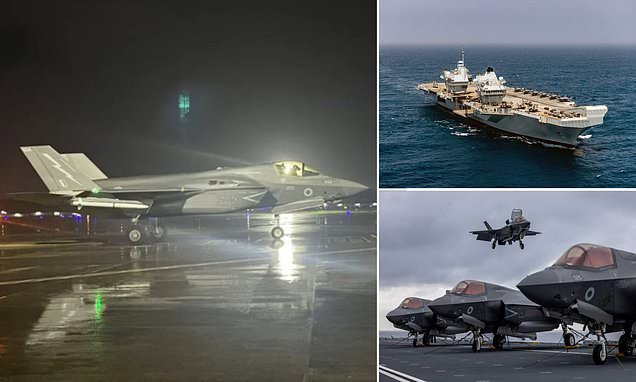A British Royal Navy F-35B Lightning II fighter jet remains mysteriously grounded at Thiruvananthapuram International Airport in India since June 14, 2025, after making an emergency landing. The prolonged stay of the world’s most advanced stealth fighter in India has sparked widespread speculation from mechanical failure to covert surveillance to diplomatic friction. But what’s really going on?
Emergency Landing: What Happened?
The F-35B, operating from the UK’s aircraft carrier HMS Prince of Wales positioned approximately 100 nautical miles off the Kerala coast, was forced to divert to the civilian airport due to a hydraulic failure. Facing turbulent weather and reportedly low fuel, the pilot chose to land at the nearest available airstrip.
The aircraft touched down safely at around 9:30 PM IST and was immediately secured in Bay 4 of the airport apron under tight security provided by the Central Industrial Security Force (CISF). Indian Air Force (IAF) radars had detected and tracked the aircraft during its approach, despite its stealth capabilities.
Why is the jet in the Open?
According to British defence officials, the emergency was caused by a serious hydraulic malfunction. Though initial assessments suggested the jet might return to the carrier within a few days, the issue proved more complicated than expected. Royal Navy technicians were flown in to carry out repairs, but multiple attempts failed to make the jet flight-worthy.
As a result, discussions are now underway to airlift the jet back to the carrier or to the UK using a military transport aircraft—a logistical operation requiring coordination between British and Indian authorities.
The aircraft’s open placement in the airport apron raised eyebrows, but sources clarify that this was due to the emergency nature of the landing and lack of appropriate military infrastructure at the civilian airport. However it is still curious why is the jet still out in the Open, is it under surveillance? Is the pilot waiting for something? Nevertheless, the jet is being closely guarded and monitored.
Is the F-35 Spying on India?
This theory gained traction on social media, that the jet was attempting espionage on India. And the Indian radars successfully detected and tracked the jet—traditionally a challenge given the F-35’s stealth profile. Indian defence sources see this as a validation of India’s radar capabilities but dismissed the idea of a deliberate spy mission.
Officials from both nations have reiterated that the diversion was purely safety-related, and British forces followed all protocols in seeking emergency assistance.
The theory floating online is that India has grounded the aircraft for security or diplomatic reasons. According to some reports the F-35 has been spotted by the Indian air surveillance when it had been testing India’s Aeriel perimeters with its stealth technology due to the ongoing Iran clash. Many western assets are currently deployed in the region and have been assessing the military parameters. However, there is no official directive on these reports. The official statements remain that the F-35 is grounded simply because repairs have not been completed, not due to any Indian action.
India has in fact provided full cooperation, including airspace clearance, airport services, and security for both the aircraft and British personnel.
The stranded British F-35B has unintentionally become a symbol of modern military diplomacy and cooperation, highlighting how both nations handled a sensitive defence situation with transparency and restraint.
Also read: Is the F-35 Really Invincible? The Stealth Jet Myth Faces Harsh Reality
As of now, the aircraft is awaiting either final repairs or a special transport lift out of India. Whether it takes off or is flown out in parts, one thing is clear: the F-35’s unexpected layover story is much more than has been reported in the media, the true details of which will only come out over time.
